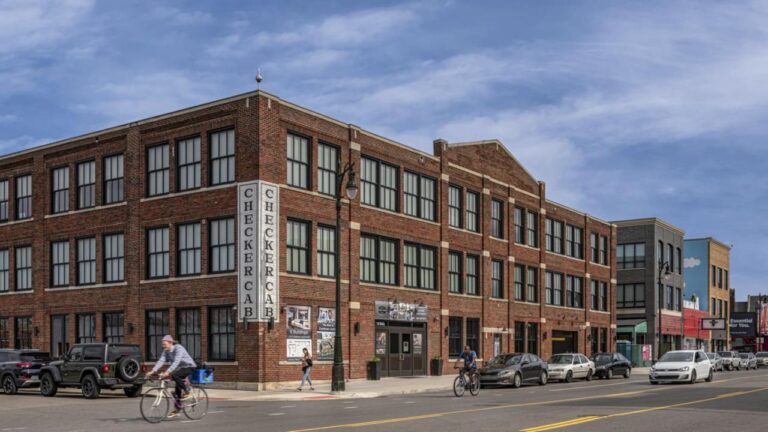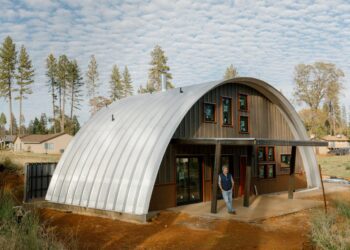Introduction: Unlocking Hidden Real Estate Wealth
Historic preservation tax credits represent America’s most lucrative—yet underutilized—real estate incentive, offering up to 45% in combined federal and state savings for qualified renovations. With $6 billion in annual unclaimed credits (National Park Service), this definitive 2,500-word guide exposes strategic methodologies for developers, homeowners, and investors to legally maximize returns while revitalizing architectural heritage. Discover how savvy operators leverage obscure provisions to transform money pits into profitable assets.
The Preservation Economy: Why Credits Matter Now
Market drivers fueling historic reinvestment:
-
Unprecedented Funding: Federal HTC program expanded to $3.5 billion/year through 2032 (Inflation Reduction Act)
-
Urban Renaissance: Historic districts appreciate 25% faster than non-designated areas (ULI)
-
Sustainability Mandate: Adaptive reuse generates 50% less carbon than new construction (NPS)
-
Tourism Multiplier: Certified projects increase local tourism revenue by 38% (Rypkema Report)
Federal & State Credit Matrix
| Program | Credit Rate | Qualifying Threshold | Transferability |
|---|---|---|---|
| Federal HTC | 20% | National Register listing + substantial rehab | Partial (via syndication) |
| State HTC (Avg) | 25% | State/local landmark status | Varies by state |
| Combined Potential | 45% | Meet both standards | Stackable |
Eligibility Secrets: What Qualifies & What Doesn’t
A. Building Selection Criteria
Target properties with hidden potential:
-
“Contributing Structures”: Buildings in National Register districts (even if individually unlisted)
-
Pre-1936 Construction: Federal cutoff for most commercial properties
-
Facade Retention: 75%+ exterior preservation required
-
Disqualified Properties: Religious buildings, moved structures, reconstructed demolitions
B. Substantial Rehabilitation Test
Calculating the magic number:
-
Expenditure Threshold:
-
Commercial: Exceed greater of $5,000 or adjusted building basis
-
Residential: 50%+ of acquisition cost (state-specific)
-
-
Qualified Expenses:
-
Structural repairs
-
HVAC/plumbing/electrical
-
Accessibility upgrades
-
Site work (limited)
-
-
Excluded Costs:
-
Acquisition
-
New additions
-
Furnishings
-
Application Process Demystified (3-Phase System)
A. Part 1: Preliminary Evaluation
Critical pre-purchase steps:
-
Historic Certification: Secure National Register verification (6-18 months)
-
Financial Feasibility Study: Project cost vs. credit projections
-
Secret Tactic: Use “Pending Listing” status to lock eligibility pre-closing
B. Part 2: Rehabilitation Plan Approval
Designing for compliance & profit:
-
The 20% Rule: Dedicate 20% budget to character-defining features (windows, facades, flooring)
-
NPS Secret: Prioritize “preservation over restoration” for faster approvals
-
Case Study: Cincinnati’s Union Terminal secured $170M via phased rehabilitation
C. Part 3: Final Certification
Post-renovation requirements:
-
Documentation Package:
-
Before/after photos
-
Architectural drawings
-
Expense audits
-
-
Compliance Traps:
-
Unapproved material substitutions
-
Undocumented change orders
-
Labor misclassification
-
Advanced Financial Engineering Strategies
A. Credit Monetization Pathways
Converting paper credits to cash:
-
Direct Use: Offset developer’s tax liability (5-year carryback/20-year carryforward)
-
Syndication: Sell credits to investors at $0.85-$0.95/dollar (average 22% IRR)
-
State Transfer Programs: Montana’s 90% refundability vs. Georgia’s non-transferable credits
B. The “Basis Boost” Loophole
Maximizing depreciation:
-
Standard Approach: Reduce depreciable basis by credit amount
-
Pro Tactic: Retain full basis using “lessee pass-through” structure
-
Savings Impact: $1.2M additional depreciation on $5M project
C. Credit Stacking Techniques
Layering incentives:
-
Federal/State HTCs (20-45%)
-
New Markets Tax Credits (39%)
-
Opportunity Zone Funds (capital gains deferral)
-
Energy Efficiency Credits (IRC §179D)
-
Case Example: Detroit’s Book Tower secured 78% combined subsidies
Compliance Landmines & Solutions
A. Documentation Pitfalls
Audit-proofing your project:
-
Time-Stamped Photography: Required for all “character-defining features”
-
Material Authenticity: Original wood samples vs. modern replicas
-
Solution: Blockchain-based audit trails (HistoriChain platform)
B. Recapture Triggers
*Avoiding 5-year clawbacks:*
-
Prohibited Actions:
-
Material exterior alterations
-
Change from income-producing use
-
Sale to non-compliant buyer
-
-
Shield Strategy: “Recapture insurance” at 1.5% of credit value
State-Specific Opportunities
A. California’s Mills Act Advantage
-
Property Tax Reduction: 40-60% via 10-year contracts
-
Hybrid Approach: Combine with federal HTC for 65% savings
-
Success Story: Pasadena’s Greene & Greene House saved $28,000/year
B. New York’s Brownfield Synergy
-
Tax Credit Bonanza:
-
25% state HTC
-
22% Brownfield Credit
-
10% Historic Barn Credit
-
-
Maximization: Buffalo’s Silo City secured 57% combined credits
C. Texas’ Forgotten Incentives
-
Hidden Programs:
-
25% State HTC (capped at $5M/project)
-
Local tax abatements (up to 100% for 10 years)
-
Downtown Revitalization Grants
-
Case Studies: Profit Blueprints
A. Cincinnati Music Hall (Commercial)
-
Credits Secured: $25M federal/state HTC
-
Profit Engineering:
-
Syndicated 85% of credits
-
Retained basis for accelerated depreciation
-
Stacked with NMTC financing
-
-
ROI: 34% annual return
B. Charleston Single House (Residential)
-
Tax Savings: $310,000 federal/state credits
-
Strategies:
-
Phase 1: Structural stabilization (credit-qualified)
-
Phase 2: Interior modernization (self-funded)
-
-
Appreciation: 300% post-certification value increase
Future Trends & Legislative Outlook
-
Green Energy Integration: EV charging stations now qualify as rehabilitation expenses (2023 IRS ruling)
-
Disaster Recovery Credits: Proposed 10% bonus for climate-resilient retrofits
-
Digital Documentation: AI-powered compliance verification via 3D laser scans
-
Rural Expansion: Pending legislation for 30% credits in Opportunity Zones
Conclusion: The Preservation Gold Rush
Historic tax credits remain the real estate industry’s most powerful wealth-creation tool—when decoded properly. By mastering eligibility nuances, layering incentives, and avoiding compliance traps, developers achieve what others dismiss as impossible: profitable preservation. As legislation evolves toward sustainability and urban revitalization, those fluent in this complex language won’t just save history—they’ll build fortunes upon it.
Tags: Historic Tax Credits, Preservation Incentives, Adaptive Reuse, Real Estate Development, Tax Credit Syndication, Renovation Financing, Historic Rehabilitation, IRS Compliance, Real Estate Investing, Heritage Conservation












